RICHARD GORDON and his models
Some months ago during some correspondence with your Editor over an article, it was suggested that I might like to write about some of my boat building experiences over these last few years. I said at the time that he didn’t know his rotten luck, so here goes!
Victoria
Enjoy more Model Boats Magazine reading in the monthly magazine.
Click here to subscribe & save.
When I was young, I built and then invariably crashed model aeroplanes, as gliders especially seemed to like to ignore the DT fuse and head straight for an un-climbable tree in the local glen! Long years of work in a university followed until the early 1980s when my wife and children took me by surprise one birthday and presented me with a box containing the kit for a Patrick Blunt Models (PBM) Albert tug. This kit is no longer available, but at the time it was one of a range of models from this manufacturer. This took me several years of very happy (and very part-time) building to complete, the bow and stern sections being built up from blocks of balsa and requiring shaping to the correct section contours. This was very satisfying to someone who revelled in seeing the eventual shape coming to life under the sandpaper block. This model, named ‘Victoria’ by me, was fitted out with cumbersome (at least compared to today) r/c equipment, sailed well and looked good both in and out of the water, Photos 1 and 2. It is sad to reflect how few models now seem to require this time consuming but satisfying modelling of the hull shape. I note however that a similar model is now available from Mountfleet Models, albeit with a GRP hull.
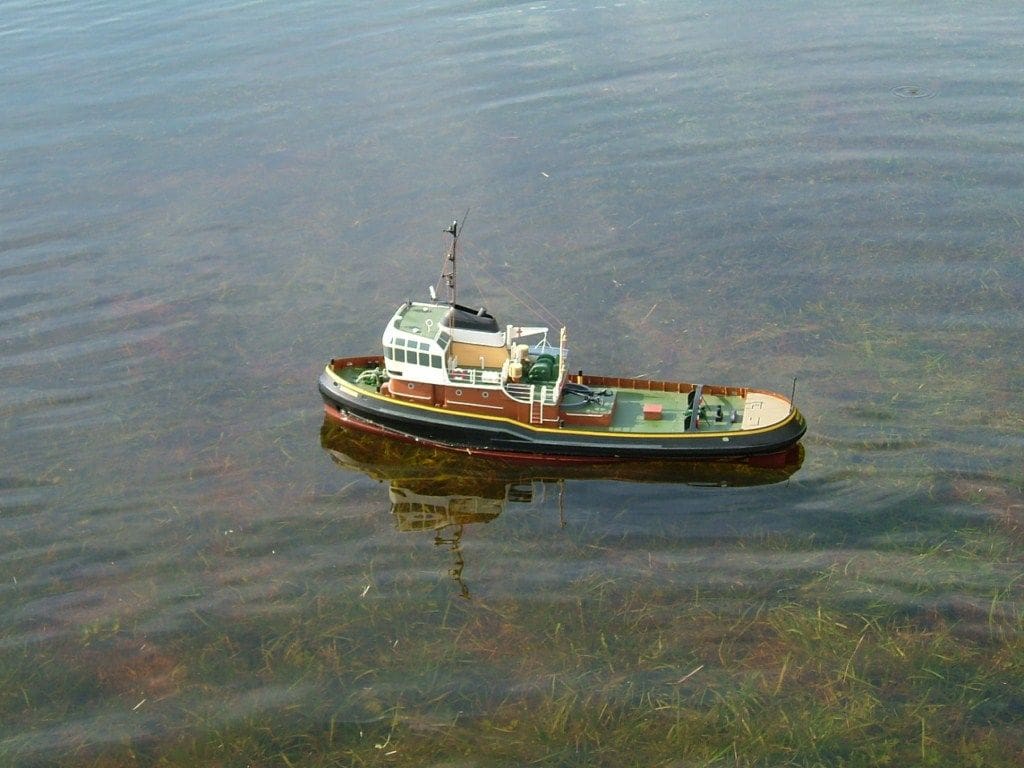
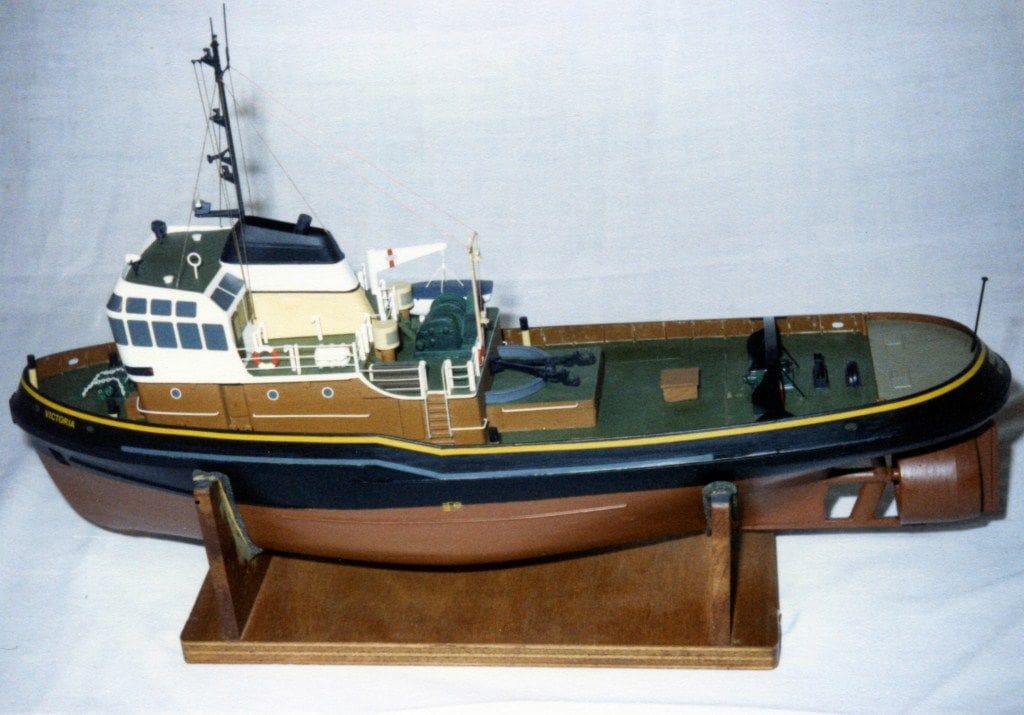
Anteo
This was followed by a long period of non-model making, before in the late 1990s as I approached retirement, I was able to collar a bedroom for the work board on the bed (!) that constitutes my workshop and purchase the Panart Anteo from Scoonie Hobbies. Yes another tug, but one that introduced me the hard way to double planking of a hull.
This was an interesting experience and one that induced much blue air as I learnt what not to do when planking. At this point I feel I must interject a discordant note on the help received from some club members. I should hasten to add here that I am not a member of a model boating club. Anyway, I contacted some members of a prominent fairly local club to be met with very negative interest, one telling me that he had built one but his planking had sprung, and another club official who commented when told the size of the Anteo model: ‘Oh, so big!’, and then gave no advice at all! So my experience has been a bit different from the norm. Perhaps, I was just unlucky as I guess most model boat builders are only too keen to pass on positive advice.
Anyway, this was an extremely satisfying model to build as there were eight sheets of drawings and the parts supplied were of a high quality and this helped encourage me with the project, Photo 3. This model has been much admired on the water by onlookers as it sails across a local loch which doubles as a boating pond for me, Photo 4. Mind you, it is interesting sailing the model when on some days the wind whips up the surface so that it is battling through what amounts to gale force conditions. I incorporated a Graupner oil smoke generator but have been disappointed as the smoke output was almost invisible.
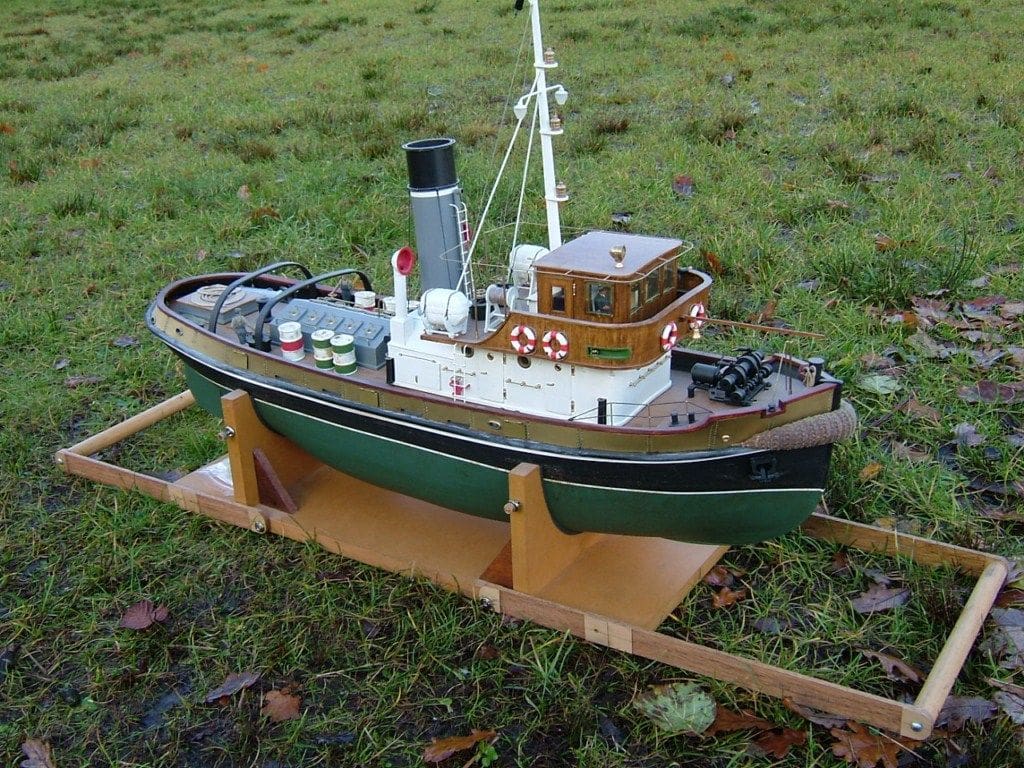
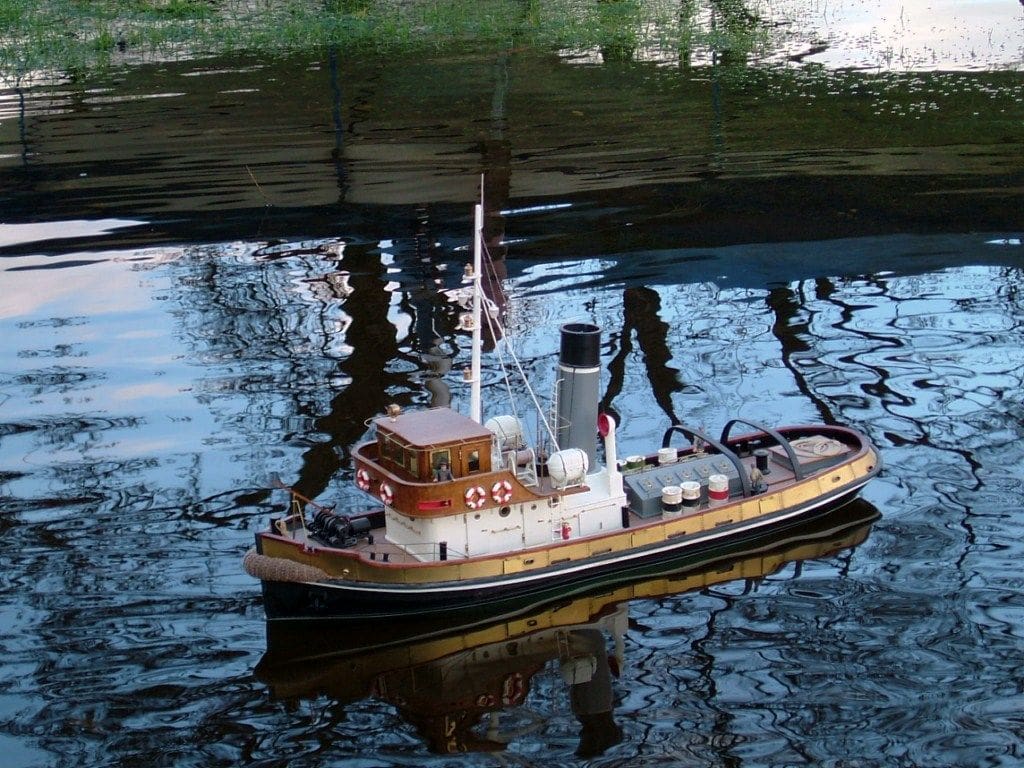
Sir Kay
The next model was a complete change as I fancied the looks of the Caldercraft WW2 Sir Kay minesweeper. This was also for me the first model that came with a GRP hull. After the brass fittings of Anteo, the softer white metal lead alloy fittings needed gentle handling, but various requests for help to Jotika were always answered promptly and courteously.
This was a fascinating model to build as several drawings of the various boats in this class were obtained along with a detailed book from the library depicting the camouflage schemes and colours in the early days of WW2 before radar changed everything. A photo taken at the time by the ‘Picture Post’ of ‘Sir Kay’ at sea was very useful, Photo 5, and Photo 6 is of the model. This model looks great on the water and has given me much pleasure, but I wish that I had tried to weather it a bit, but was unsure of how best to proceed, Photo 7. If in doubt then don’t, is a good maxim!
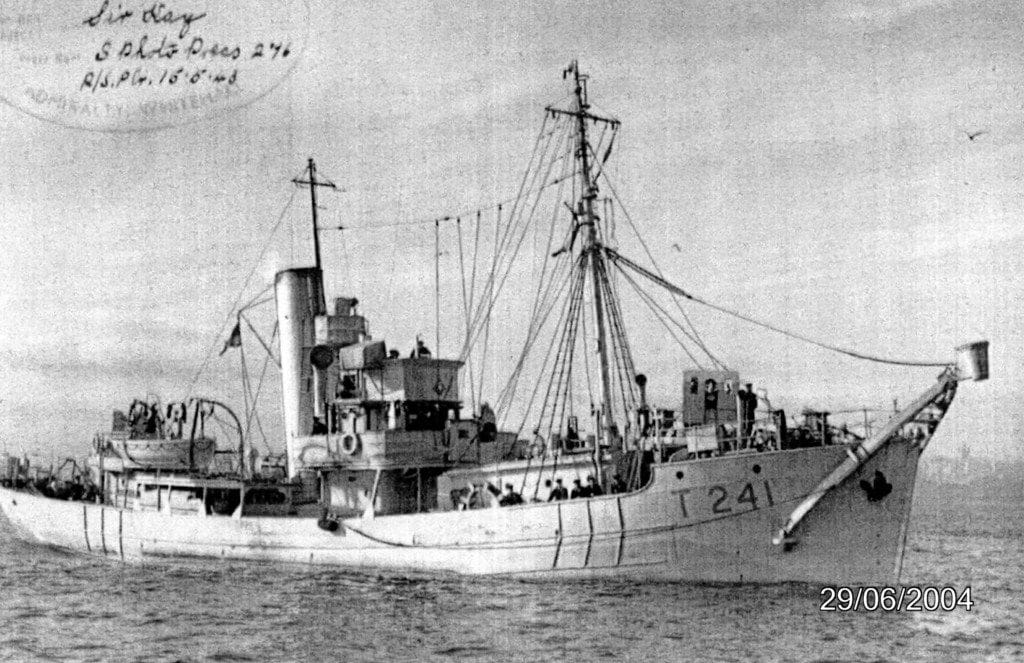
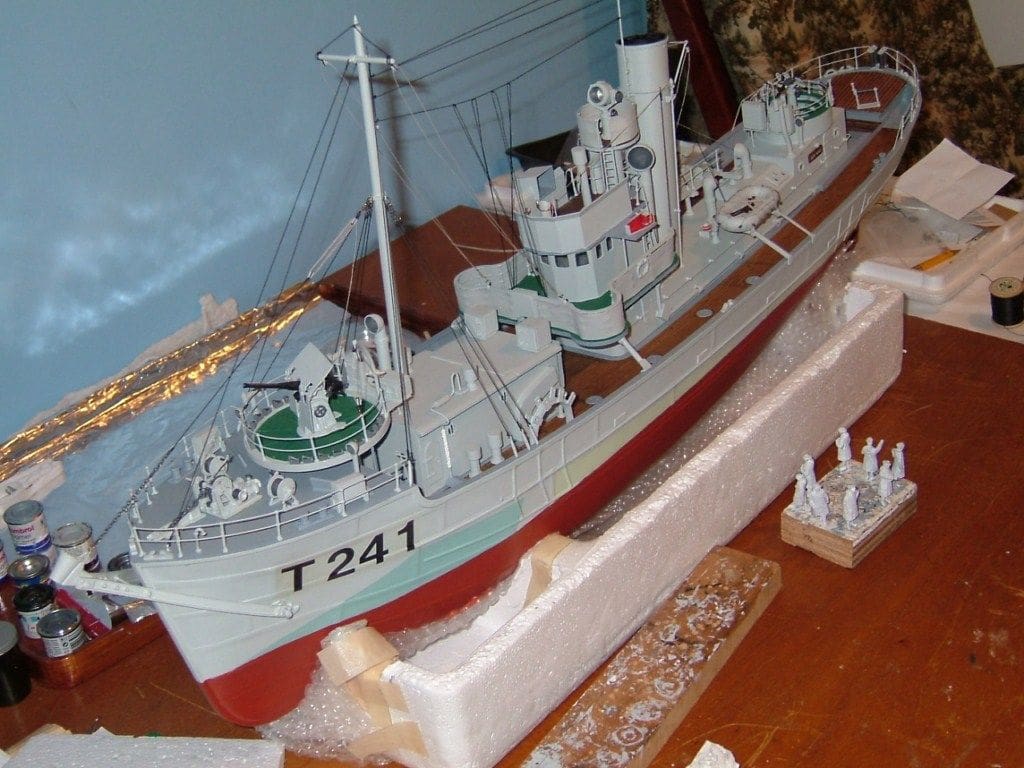
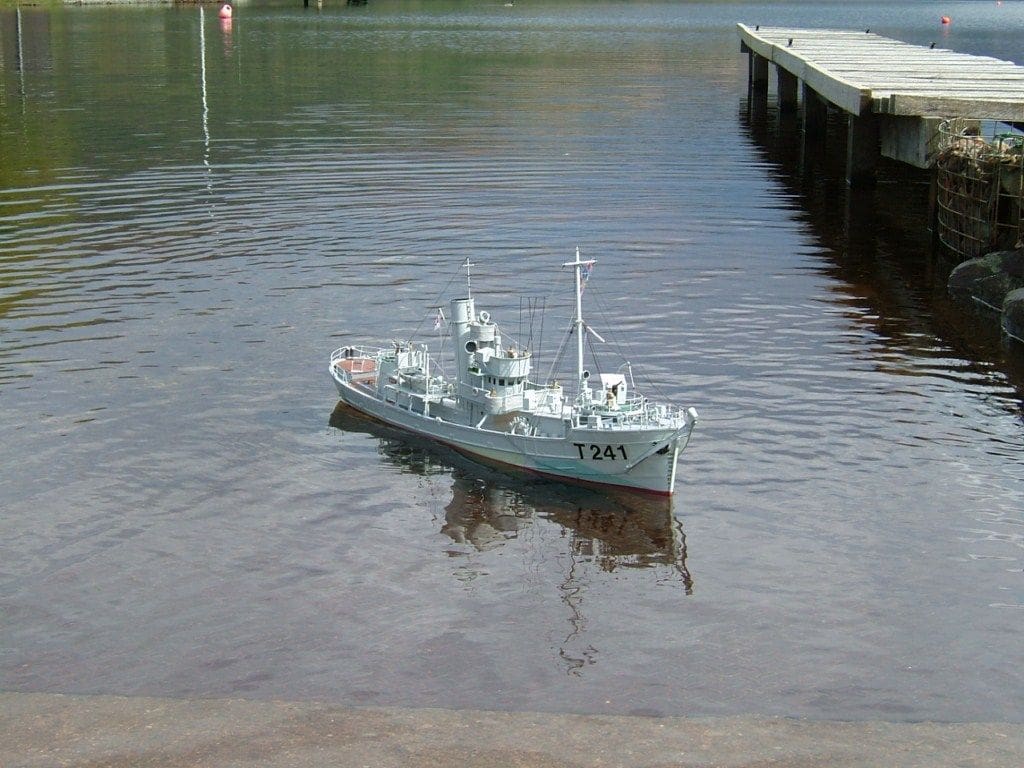
Hellen
The Artesania semi-scale Hellen trawler kit (currently not in production) followed and proved a simpler model to build than Sir Kay, but was enjoyed as in addition to the preformed hull, it included some intricate work in wood, particularly on the wheelhouse, Photo 8. This model sails well on the loch, Photo 9, and, unlike Anteo and Sir Kay was a good model to construct as it was quite forgiving in the sense that you could make a mistake and it would not be disastrous. After Hellen, a model with more intricacy that would provide a greater challenge was looked for.
Highlander
In the Mountfleet Models Highlander puffer the requirement of a greater challenge was amply met and this kit was purchased just a couple of months before Frank Hinchcliffe sadly died. The model took me almost three years to complete working off and on. One of the disadvantages of using the bed in a spare bedroom as a work base is that every time family or visitors come, everything has to be packed away and the model in progress added to the previous models now residing on top of every wardrobe in the house! I expect many other readers will recognise this storage problem as their fleets grow!
I must say that the ladies that run Mountfleet Models were always most helpful in making good any missing or damaged parts. As this model was large and of broad beam, Photo 10, I decided to go the whole hog and incorporate the JJC water-based smoke generator and two of the sound modules which were receiving favourable reviews at that time. This proved to be not the best purchase I have ever made as some readers will no doubt be familiar with the problems that subsequently occurred as regards after-sales service. The smoke generator packed up when being tested in the model and I was lucky to receive a great deal of help from a radio workshop in Edinburgh. They worked on the faulty generator and modified it so that it really did make smoke.
When first launched, this model rode very high in the water and required a great deal of ballast to bring it down to the water line. As in the meantime I have got older, I do find that the weight of this model with its ballast is a problem and this requires me to be very careful as for example I handle it in and out of a car. However, once on the water with the smoke coming out of the stack and the occasional hooter and seagull cry from the sound module, this model is proving great fun, Photo 11, especially the look of surprise on an unaware bystander’s face when these sounds occur.
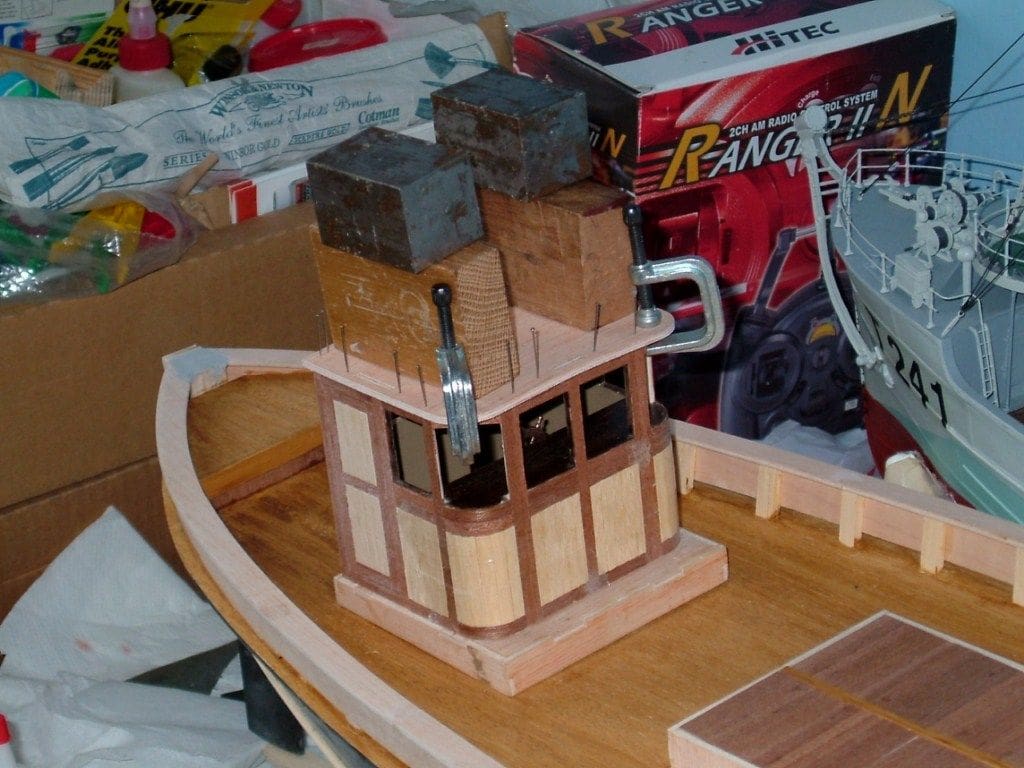
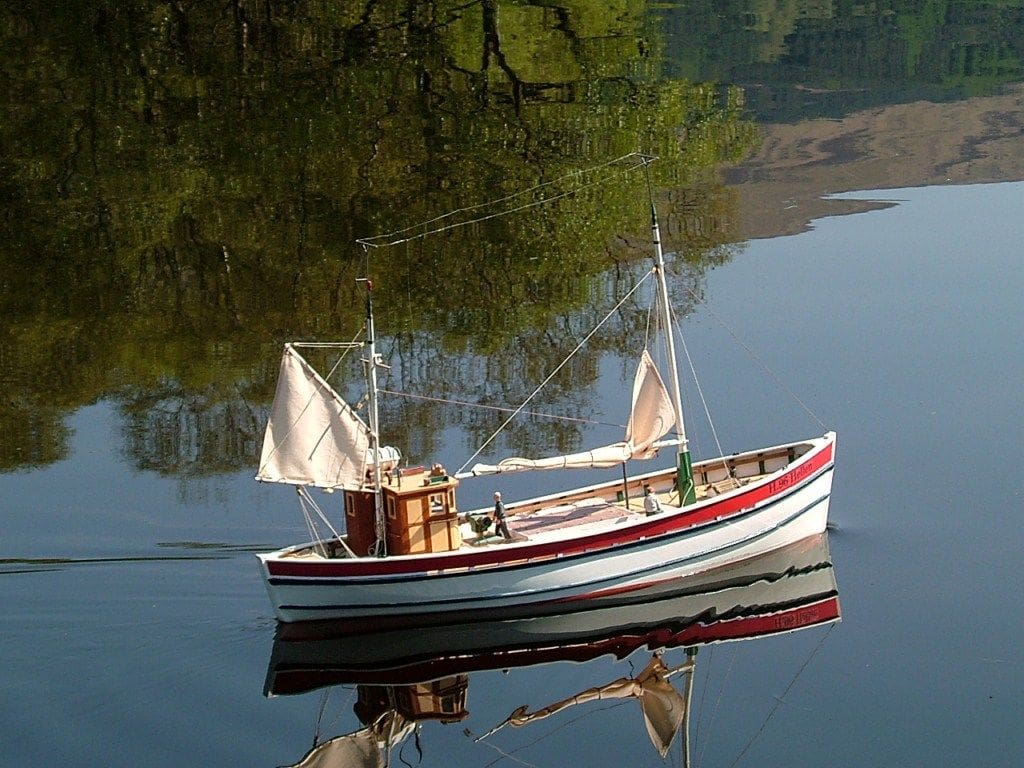
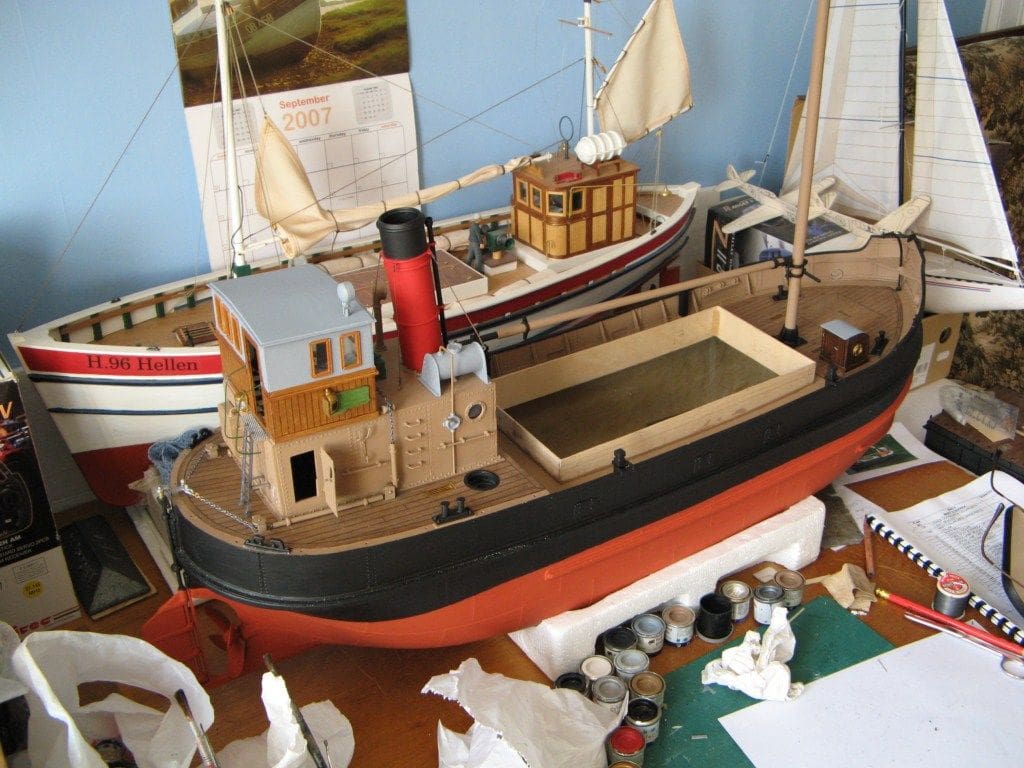
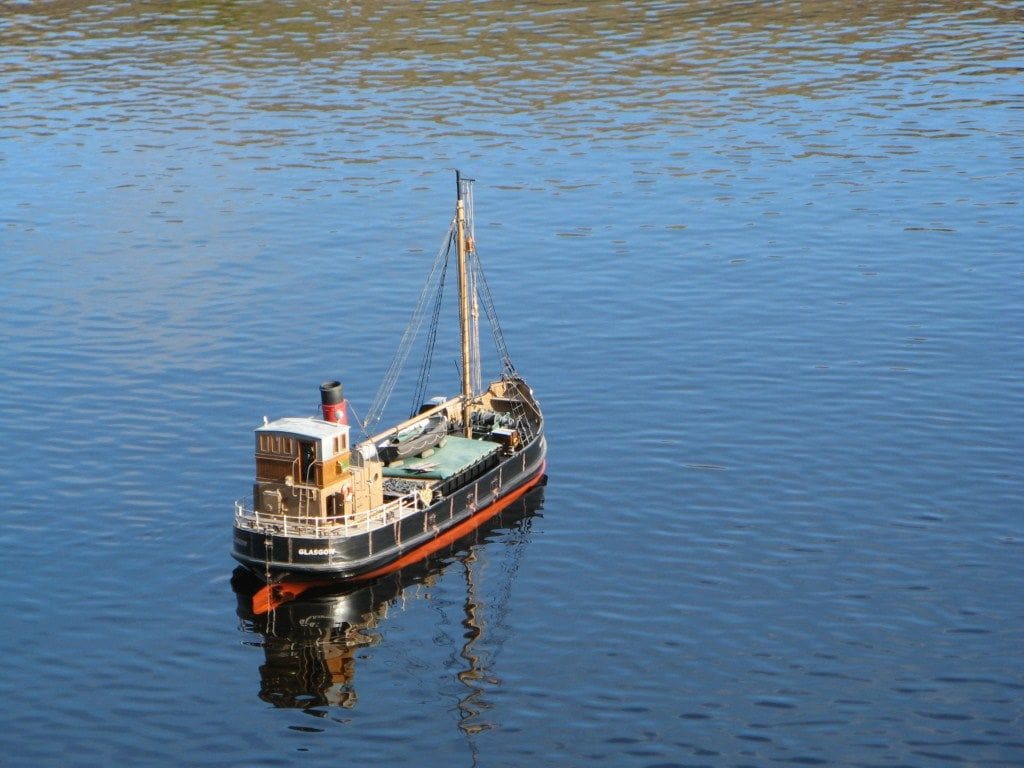
S-130
As this article is being written, the latest model is menacing me from the work board, namely a long sleek S-130 from Robbe, complete with what I hope will prove a reasonable attempt at weathering and a crew courtesy of Italeri, Photo 12. This all plastic model was the first I have made in this material and has turned out better than I thought it might when I received it from ‘A Model World’. I miss working with wood but the increasing use of plastic seems to be what many modellers want nowadays, perhaps because a model can be on the water sooner rather than later.
With the help of Dave Milbourn of ACTion R/C Electronics, I have separated the centre motor speed control from the outer two and am using the P94 dual esc and mixer unit to control these and hopefully tighten up the turning circle radius. At the time of writing early in 2010 it is too cold to go to the loch, so here is a domestic test tank picture, Photo 13!
Perhaps I should also explain why I have stuck to making models from kits rather than scratch building. I live in the country and am fairly remote from the nearest town so that any sudden requirement for material would require a round trip of at least 60 miles to the nearest model shop or even fellow model boaters or a club. I know there must be many modellers experiencing similar problems as the number of shops become fewer and maybe I am just making an excuse for mental or physical laziness as I get older, but with petrol and postage charges ever increasing, I have decided that ordering a kit that is supposedly complete, at least gets me on the way with hopefully very few requirements for extra bits. This also explains why I use the local loch, on which the sailing club to which I belong sails, as my pond. Yes, I have to choose a calm day, but it suits me.
Building these boats has given me much pleasure over these last few years, but my wife is beginning to look askance at the number of boats now residing on top of every wardrobe in the house, Photo 14, so perhaps a bigger house is the answer!
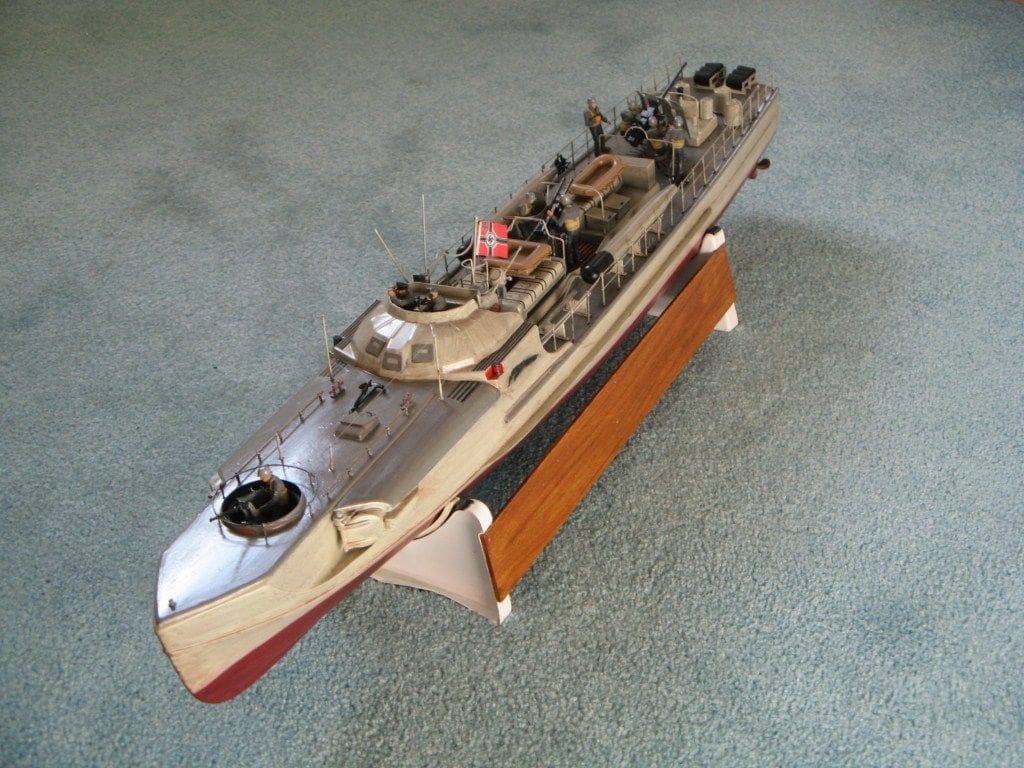
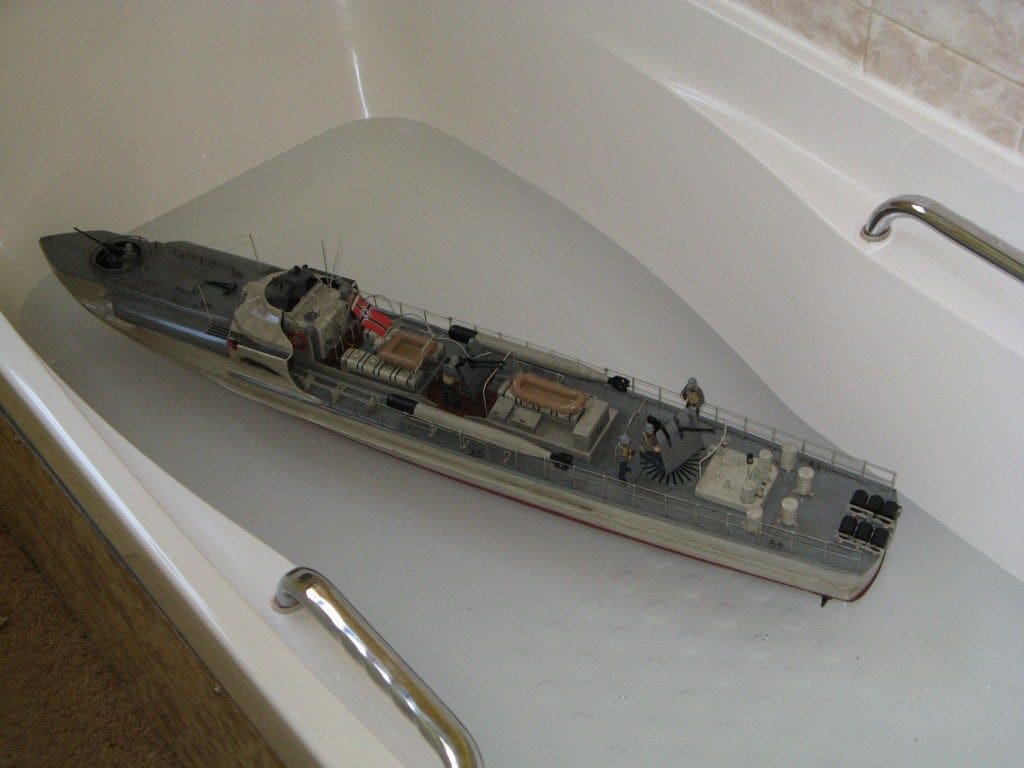
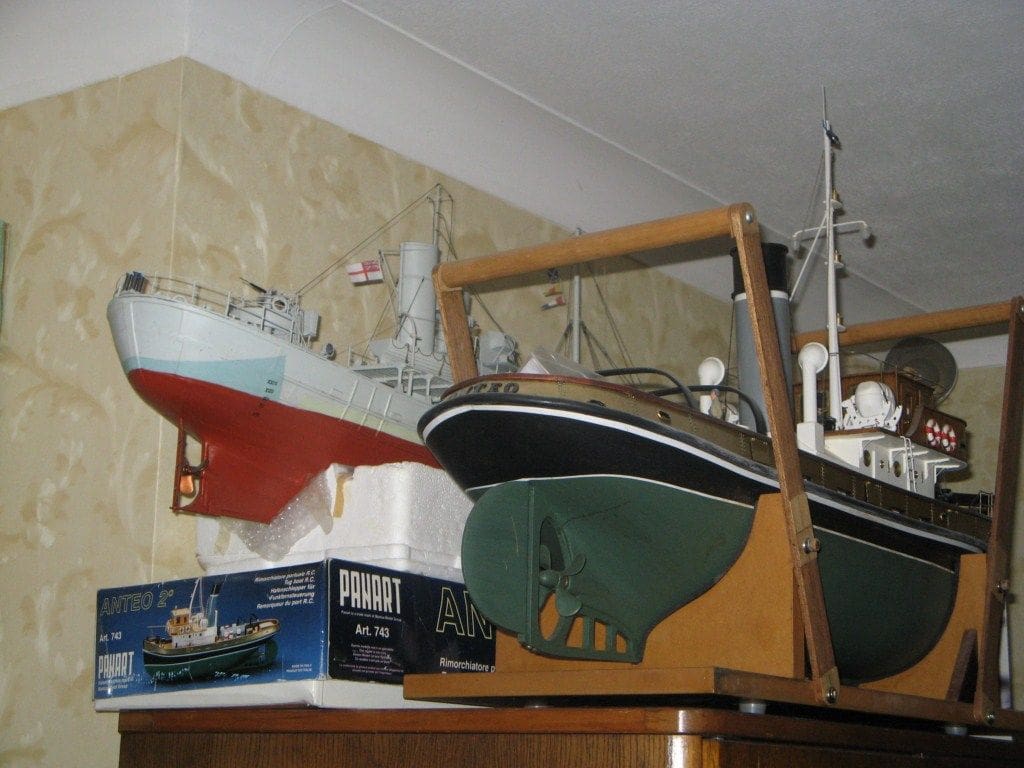
(Within our hobby we tend to promote the idea of being a member of a club whenever possible, but I know from letters and emails that there are many who for practical reasons are not club members or perhaps choose to pursue their hobby alone, because it suits them and their lifestyle better. For these model boat builders, a magazine such as this is their positive link with the hobby as a whole – Editor)



